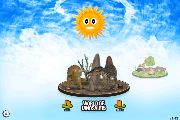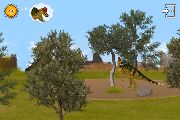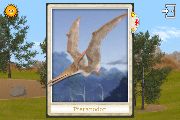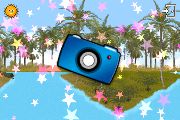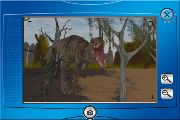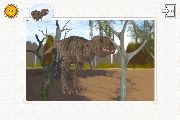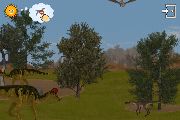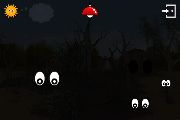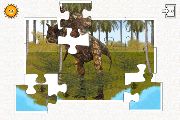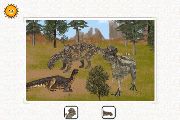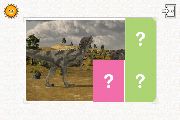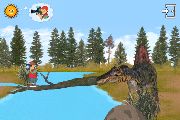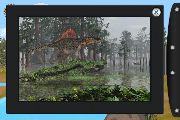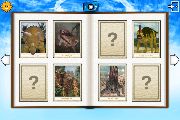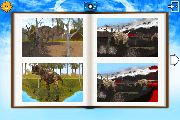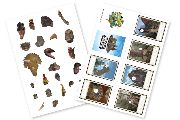Animals of North America
This is the list of all animals of North America (and spoken facts) kids will have to discover in the app.
 |
Mustang The mustang is a wild horse which lives in herds. When the mustang is in danger, it gallops away. |
 |
Bison In winter, the bison's coat is longer than in the summer in order to protect it from the cold. The bison can run quickly and it knows how to swim. |
 |
Coyote The coyote is smaller than a wolf, but it is faster. The coyote lives in the plains, the desert, the forest and, sometimes, even in cities! |
 |
Rattlesnake The rattlesnake only attacks if it is unable to escape. It can be very dangerous. The rattlesnake shakes its tail to ward off its enemies. |
 |
Turkey Vulture |
 |
Prairie Dog The prairie dog lives in colonies in large burrows. As a warning, prairie dogs emit a sound very similar to a bark. |
 |
Roadrunners The roadrunner is a bird which spends more time running than flying. When it runs, the roadrunner uses its long tail to change direction. |
 |
Pronghorn The pronghorn's colour enables it to hide in high grass. The pronghorn is the fastest animal in the American continent: it can run as fast as 60 km/hour. |
 |
Black-tailed Jackrabbit The black-tailed jackrabbit runs very fast and can jump as high as 3 metres. The black-tailed jackrabbit eats grass and sometimes cactus. |
 |
Grizzly The grizzly enjoys fishing: it catches fish with its claws. The grizzly can stand up on its hind legs: with its huge claws, it can be very imposing! |
 |
Moose The moose's antlers fall off every winter and grow back again the following spring. The moose is also known as the elk in Europe. |
 |
Raccoon The raccoon is very dexterous with its feet: it is able to pick up an object and turn it in all directions. The raccoon is a good swimmer and an excellent climber. |
 |
Skunk The skunk gives off a very unpleasant odour to defend itself. The skunk likes honey (and bees): stings do not appear to bother it! |
 |
Puma The puma is also called the cougar or the mountain lion. From a standing start, the puma is able to jump as high as 5 metres. |
 |
Bald Eagle The bald eagle lives on the waterside and feeds mainly on fish. When fishing, the bald eagle flies over the water and catches fish with its claws. |
 |
Bighorn sheep The bighorn sheep climbs rocks very quickly to protect itself from pumas and bears. The bighorn sheep's horns can weigh up to 14 kg. |
 |
Mountain Goat The mountain goat is very good at climbing rocks. The mountain goat has a long white coat, short black horns and a small beard! |
 |
Wolverine The wolverine looks like a small bear and it uses its long claws to climb and dig holes. The wolverine is small but very strong, which makes it very dangerous. |
 |
Polar Bear The polar bear is completely white: on the icefield, it is very difficult to spot it! The polar bear is a very good swimmer and it is even able to spend two minutes under the water. |
 |
Arctic Fox The Arctic fox is white in the winter and brown in the summer: this allows it to hide itself. When it sleeps, the Arctic fox puts its tail over its muzzle and feet to protect it from the cold. |
 |
Snowy Owl The snowy owl builds its nest on the ground and not in the trees. The snowy owl can look at its own back and turn its head round completely. |
 |
Seal Thanks to its moustache, the seal is able to sense the slightest movement in the water and find fish. A thick layer of fat protects the seal from the cold. |
 |
Walrus Even the polar bear is afraid of the walrus's large tusks! The walrus is able to plant its tusks in the icefield to pull itself out of the water. |
 |
Beluga The beluga is able to find the thinnest part on the icefield in order to break the ice and breathe. The beluga is also called the "white whale". |





















































































